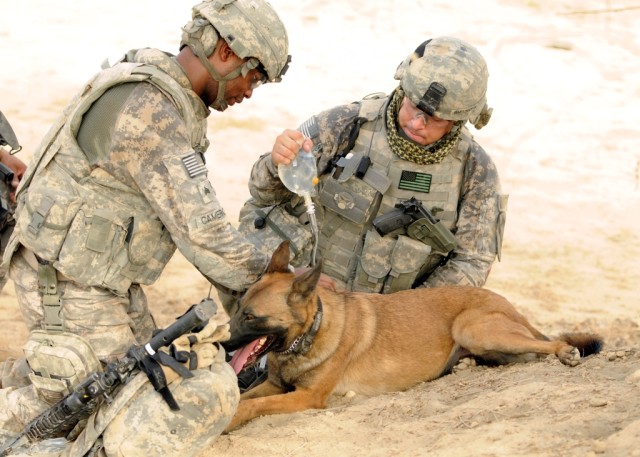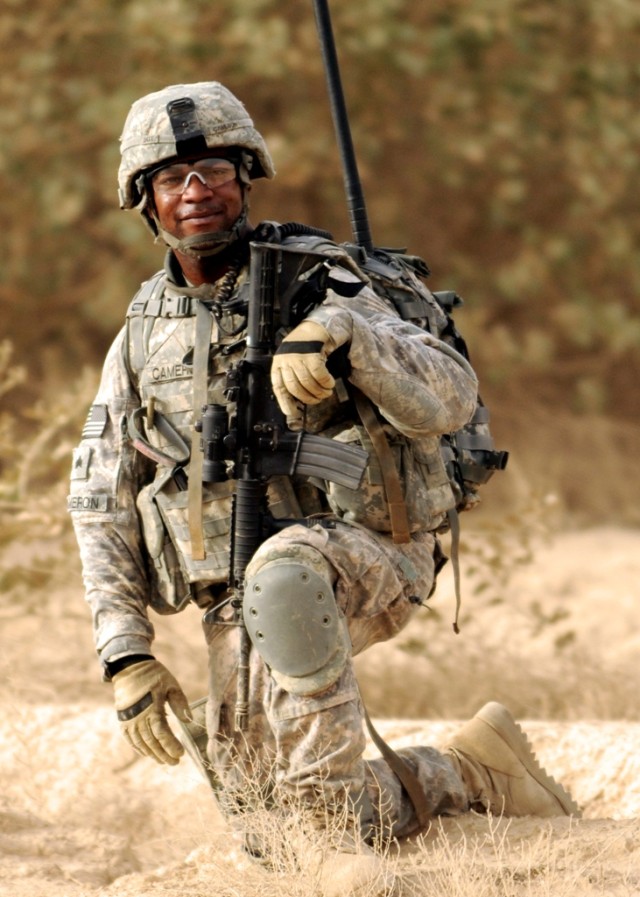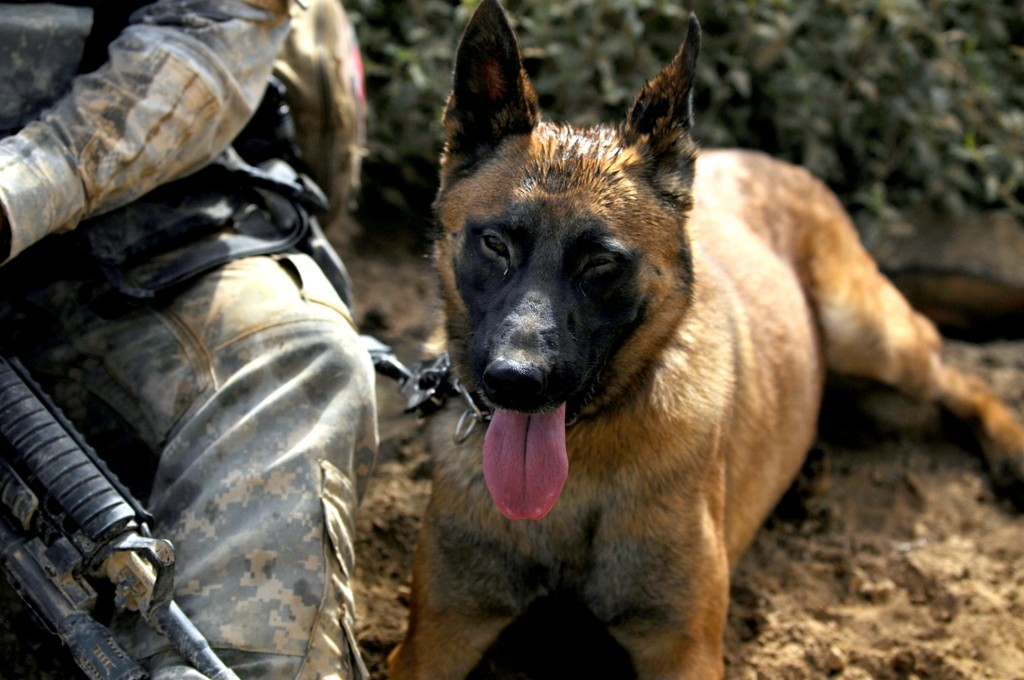BAGHDAD - Sgt. Laurence Cameron was given the radio call sign "Dawg Medic" by other Soldiers during this deployment, but it wasn't until a recent mission that the Rock Hill, S.C., native actually lived up to the nickname.
Cameron, a combat medic with B "Dawg" Battery, 113th Field Artillery, 30th Heavy Brigade Combat Team, patrolled with two military working dogs, June 20, when one of the dogs became overheated.
Military dog handler, Sgt. James Harrington, of the 1st Calvary Division Provost Marshals Office, called for the Cameron.
"The handlers are all trained in dog first aid, but I show the medics how to do it, too," said Harrington, of New Orleans. "That way they can take care of the dogs if one of the handlers goes down."
Cameron immediately got to work on giving the dog, named Ryky, intravenous fluids.
"The dog handler explained how to do it and I went about doing the procedure," said Cameron, "and when it comes to an IV there is not that much difference between a dog and a human."
Although Cameron did not expect to have to give an IV to a canine, he knew it was a possibility.
"When I was at training in Wisconsin, I had a drill sergeant that had been a dog handler and he taught us a little bit about working with the dogs," said Cameron, "It was interesting to actually get to do it."
This is only the third I.V. the "Dawg Medic" has given to anyone - or anything - for overheating since the beginning of this deployment. Overheating is a problem in Iraq because of high temperatures, and Soldiers, even the furry kind, must be wary of it.
"We monitor the dog's temperature throughout the patrol." said Staff Sgt. Christopher Jasper, one of the other dog handlers on patrol. "Once their temperature gets over 102 degrees we have to start looking at ways to cool them down, and once it gets to 103 or 104, we have to get them an IV."
Because of his call sign some of Cameron's fellow Soldiers also refer to him as the 'Veterinarian.'"
"Everyone thought it was funny that I actually worked on a dog because of me being called 'Dawg Medic' and 'Veterinarian.'"
Cameron was happy to be able to help what he called "a fellow soldier."
"It was cool to be able to help out a dog that is there to help us by detecting explosives," he said. "It's part of the Army's battle buddy system. They are Soldiers like us, they just have four legs."






Social Sharing